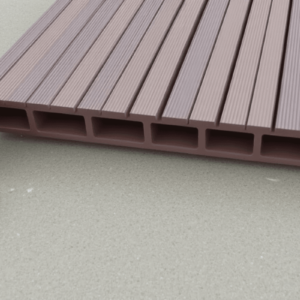WPC Wall Cladding Design: A Preferred Choice for Interior Designers
As the world becomes more conscious of sustainability and eco-friendliness, materials like Wood Plastic Composite (WPC) are gaining popularity in various industries. In interior design, WPC wall cladding has emerged as a preferred choice due to its low maintenance, durability, and eco-friendly nature. This article will delve into the reasons behind this preference and explore some recent projects that showcase innovative WPC wall cladding designs.
Low Maintenance and Durability: The Key Advantages of WPC Wall Cladding
One of the primary reasons why interior designers are increasingly opting for WPC wall cladding is its low maintenance requirements. Unlike traditional wood cladding, which requires regular painting or staining to prevent decay, WPC wall cladding is resistant to moisture, mold, and pests. This means that it requires minimal upkeep, making it an ideal choice for busy professionals and homeowners who want to enjoy the beauty of wood without the hassle of constant maintenance.
In addition to being low maintenance, WPC wall cladding is also incredibly durable. It can withstand extreme weather conditions and is resistant to warping, cracking, and splitting. This makes it a perfect option for both indoor and outdoor applications, allowing designers to create cohesive spaces that flow seamlessly from one area to another.
Eco-Friendly Nature: A Sustainable Choice for Interior Design
Another significant advantage of WPC wall cladding is its eco-friendly nature. Made from a combination of recycled plastic and wood fibers, WPC wall cladding helps reduce the amount of waste sent to landfills and minimizes the need for virgin timber resources. By choosing WPC wall cladding, interior designers can contribute to a more sustainable future while still achieving their desired aesthetic goals.
Furthermore, WPC wall cladding can be recycled at the end of its life cycle, further reducing its environmental impact. This closed-loop approach to material use aligns with the principles of circular economy, making WPC wall cladding a responsible choice for environmentally-conscious designers.
Case Studies: Innovative WPC Wall Cladding Designs in Recent Projects
To illustrate the versatility and appeal of WPC wall cladding, let’s examine a few recent projects that have successfully incorporated this material into their designs:
- Project A: A modern office space in downtown New York City utilized WPC wall cladding to create a warm and inviting atmosphere. The designer chose a natural wood grain finish to complement the building’s exposed concrete and steel elements, resulting in a striking contrast that enhanced the overall aesthetic.
- Project B: An upscale restaurant in Los Angeles featured WPC wall cladding throughout the dining area. The designer opted for a sleek, contemporary design with smooth, matte finishes, creating a sophisticated ambiance that perfectly matched the establishment’s high-end menu offerings.
- Project C: A residential home in San Francisco incorporated WPC wall cladding into the living room, bedroom, and bathroom areas. The designer used different colors and textures to add visual interest and depth to each space, resulting in a cohesive yet dynamic look that reflected the homeowner’s unique style.
The Impact of WPC Wall Cladding on Overall Interior Aesthetics
By incorporating WPC wall cladding into their designs, interior designers can achieve a range of effects that enhance the overall look and feel of a space. From creating a cozy, rustic vibe to adding a touch of modern elegance, WPC wall cladding offers endless possibilities for creative expression.
Moreover, because WPC wall cladding is available in a wide variety of colors, textures, and finishes, designers can easily customize their projects to suit any style or preference. This flexibility allows them to push the boundaries of traditional design and create truly unique spaces that stand out from the crowd.
Conclusion: Embracing the Future of Interior Design with WPC Wall Cladding
As we move towards a more sustainable future, materials like WPC wall cladding will undoubtedly play an increasingly important role in interior design. With its low maintenance, durability, and eco-friendly nature, WPC wall cladding offers a compelling alternative to traditional wood cladding that can help designers create beautiful, functional spaces while minimizing their environmental impact.
So whether you’re designing a commercial or residential project, consider incorporating WPC wall cladding into your next design. Your clients—and the planet—will thank you!
Reference:





Reviews
There are no reviews yet.